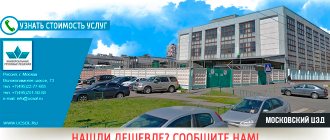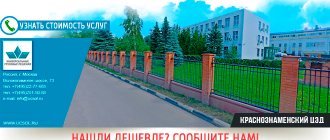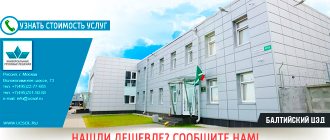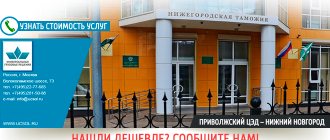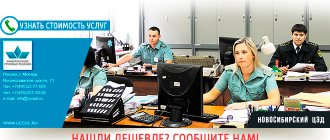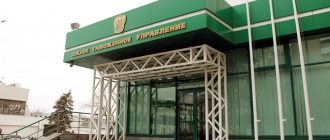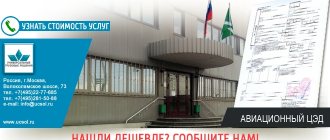HomeCustoms clearancePlaces of clearance CED Shchelkovsky CED
Attention! Shchelkovsky EDC ceased its activities on May 23, 2016 and was renamed Krasnoznamensky EDC! We offer services in any other EDCs in the country
Shchelkovsky EDC is one of the electronic declaration centers that previously operated in the region of responsibility of the Moscow Regional Customs and carried out customs clearance of various goods and cargo.
According to the Order of the Federal Customs Service of Russia dated March 24, 2021 No. 574 “On determining the location and renaming of the Shchelkovo customs post (electronic declaration center) of the Moscow Regional Customs and on amending the appendix to the Order of the Federal Customs Service of Russia dated August 26, 2015 No. 1738”, the Shchelkovo customs ceased its activities, and the Shchelkovsky CED on May 23, 2021 was renamed the Krasnoznamensky customs post - an electronic declaration center (code 10130220) of the Moscow Regional Customs of the Federal Customs Service of the Russian Federation.
If you need to submit a customs declaration and perform other operations for customs clearance of goods, then you can use the services of the Zelenograd or Krasnoznamensky Central Customs Office of the Moscow Regional Customs. You can check with our managers if you have any questions about the procedure for customs clearance at the Central Customs Office in the central region of the country. All consultations are free!
Our company “Universal Cargo Solutions” is an official customs representative (customs broker) and is included in the appropriate register of the Federal Customs Service of the Russian Federation. We provide services for customs clearance, “customs clearance” and “customs clearance” of any cargo and goods in Moscow, the Moscow region and other regions of the Russian Federation, and we work with all categories of participants in foreign economic activity (FEA): individuals, legal entities, individual entrepreneurs. Our professional customs declarants will help you quickly and efficiently declare goods in any customs procedures and modes: release for domestic consumption (import), export, customs transit and others.
Documents and information for customs clearance at the Shchelkovsky CED
- List of documents for registration of a Legal entity at customs (View)
- List of documents for registration of an individual entrepreneur at customs (View)
- List of documents for customs clearance “Import” (View)
- List of documents for customs clearance “Export” (View)
Contacts and details
| Name | Moscow regional customs post (electronic declaration center) |
| Customs code | 10013160 |
| Organizational structural form | Customs authority (not specialized) |
| Customs clearance | produced |
| Parent's name | Moscow regional customs |
| Short name | t/p Moscow regional (electronic decl. center) |
| Full address | 115404, Moscow, st. 6th Radialnaya, 1 |
| Telephone | +7 (49638) 2-20-90 |
| Fax | +7 (49638) 2-12-61 |
| [email protected] | |
| Website | https://mot.customs.ru/folder/12152 |
| Working with ATA carnets | No |
| OKATO code | 45000 |
| SOATO code | 1145 |
t/p Moskovsky regional (center el.dekl.) on the map
Other posts and customs and Moscow
- Central Operational Customs (10119000)
- Moscow customs (10129000)
- Exhibition customs post (10129010)
- Moscow railway customs post (10129020)
- Diplomatic customs post (10129030)
- Scientific and innovative customs post (10129040)
- Moscow customs post (electronic declaration center) (10129060)
- Novomoskovsk customs post (10013170)
- Central Customs Administration (10100000)
- Moscow regional customs (10013000)
- Lviv customs post (10013130)
- Central Excise Customs (10009000)
- Krekshinsky excise customs post (10009030)
- Excise specialized customs post (electronic declaration center) (10009100)
- Specialized customs post (10009130)
- Moscow energy customs post (10006030)
- Federal Customs Service (10,000,000)
- Vnukovo Customs (10001000)
- Customs post Vnukovo Airport (passenger) (10001010)
- Customs post Vnukovo Airport (cargo) (10001020)
See also: Moscow, CED
Goods not subject to electronic declaration
From January 1, 2014, on the basis of the requirements of the Federal Law of November 27, 2010 No. 311-FZ “On Customs Regulation in the Russian Federation” (Part 1 of Article 204, Part 4 of Article 322), mandatory electronic declaration of goods transported across the border of the Russian Federation.
Products to which this requirement does not apply:
1) goods that are declared by certain categories of foreign persons;
2) goods that are transported by individuals or sent to individuals;
3) goods that were placed under customs procedures for destruction, refusal in favor of the state, special customs procedures.
4) goods that contain state secrets;
5) goods sent using postal services.
All these categories of goods are prescribed in Decree of the Government of the Russian Federation of December 13, 2013 N 1154 “On the list of goods, customs procedures, as well as cases in which customs declaration can be carried out in writing” and are required to be declared in writing.
If desired, the declarant himself can choose the written form.
Customs broker services
- Personal customs clearance specialist;
- We prepare and execute the necessary documentation - declarations, applications, various permitting forms, documents, reporting;
- Recommendations on HS codes for goods;
- Preliminary calculation of customs value and amount of advance customs payments;
- Drawing up DT projects and related documents;
- Document flow with customs;
- Submission of information at the request of the Moscow regional customs post (electronic declaration center);
- Representation of the Customer's interests in the customs authorities of the Russian Federation;
- Organization, if necessary, of preliminary customs inspection of goods and vehicles before submitting the DT;
- Drawing up a declaration of intent under the seal of the customs representative;
- Consulting in the field of foreign economic activity (FEA);
Reasons for creating electronic declaration centers (EDC)
In the context of the further development and application of innovative technologies in the field of customs clearance, special attention should be paid to the functioning of electronic declaration centers and the system for remote release of goods, the purpose of their creation, the advantages of their use and prospects for their further existence. The emergence of electronic declaration centers is based on the transition to an electronic declaration system. Before the introduction of the electronic declaration system, all documents necessary for customs clearance of imported goods were provided to customs authorities by participants in foreign economic activity in paper form. The use of document flow in paper form and the existing level of communication technology, the possibilities of customs control, created a clear territorial connection of the goods and the declarant to the customs post next to which it was located. A customs post located hundreds or thousands of kilometers from the goods could not release it into free circulation. The spread of computers, the development of the Internet and information technology made it possible to begin the process of minimizing the use of paper document flow and reducing the need for direct contacts of declarants with customs officials. Gradually, this led to the creation of an electronic declaration system, when all necessary documents were provided to customs authorities electronically through special programs via the Internet.
The first electronic declaration, which used ED-1 technology (here it was directly connected to the customs program via a dedicated communication channel), was submitted in 2002.
Six years later, in 2008, an electronic declaration was filed using ED-2 technology (formalized documents were provided via the Internet). This was a colossal breakthrough in the field of customs clearance. The development of the electronic declaration system made it possible to create specialized customs posts, the functionality of which included the performance of customs operations for the electronic declaration of goods. These specialized posts are called Electronic Declaration Centers (EDC). Moreover, these specialized posts could carry out customs clearance of goods that were geographically located in another subject of the Russian Federation and even in another federal district (for example, the electronic declaration center could be at the Mozhaisk customs post, and the declarant could submit an electronic declaration from Vladivostok, Primorsky Krai). The first EDCs began operating on January 12, 2011. Currently, in the system of customs authorities of the Russian Federation, CEDs operate in all federal districts of the Russian Federation and in each regional customs department. Some EDCs may operate in a specific federal district, but in most cases the region where EDCs operate is the whole of Russia.
For most electronic declaration centers, the region of activity is the entire territory of Russia. Some electronic declaration centers are allowed to carry out declarations only in a certain federal district.
Price
One consignment of goods is understood as a consignment of goods sent at a time to the consignee using one waybill in one vehicle within the framework of one foreign trade contract.
| Type of work | Cost without VAT) |
| Carrying out customs operations and declaring goods of one consignment in import mode (IM 40): - consulting; — checking the package of documents provided by the Customer for customs clearance of one consignment (including shipping documents); — formalization of delivery documents, preparation, filling out the declaration form and electronic submission to the customs authority. | from 5,000 rubles |
| Carrying out customs operations and declaration for each subsequent consignment in import mode, if there are several consignments in one vehicle (IM 40): - consulting; — checking the package of documents provided by the Customer for registration of one consignment (including shipping documents); — formalization of delivery documents, preparation, filling out the declaration form and electronic submission to the customs authority. | from 4,000 rubles |
| Registration of each additional sheet of goods declaration, starting from the 5th (fifth) product in the import mode (IM 40). | from 450 rubles |
| Carrying out customs operations and customs declaration of goods of one consignment in export mode (EC 10): - consulting; — checking the package of documents provided by the Customer for one consignment (including shipping documents); — formalization of delivery documents, preparation, filling out the declaration form and electronic submission to the customs authority. | from 3,000 rubles |
| Carrying out customs operations and declaring goods of one consignment (other modes): - consulting; — checking the package of documents provided by the Customer for customs clearance of one consignment (including shipping documents); — formalization of delivery documents, preparation, filling out the declaration form and electronic submission to the customs authority. | from 10,000 rubles |
| Payment (additional payment) of any types of customs duties under one DT on behalf and on behalf of the Customer, using the representative’s own funds through terminal payment using a customs card/online service of the ROUND payment system. | from 3% of the documented payment amount (additional payment), but not less than 1,000 rubles |
| Assistance in obtaining a Declaration of Conformity with the CU TR for goods, as well as other permitting documents. | discussed individually |
System of interaction between the electronic declaration center (EDC) and the external customs authority
Order of the Federal Customs Service of Russia dated April 22, 2011 N 845 “On approval of the Procedure for performing customs operations during customs declaration in electronic form of goods located in the region of activity of the customs authority, different from the place of their declaration”, spells out the procedure for interaction between the electronic declaration center and the customs office. the body that controls the temporary storage warehouse or the customs control zone (CZC) where the goods are placed.
1. The inspector of the electronic declaration center, upon receipt of the electronic customs declaration, sends a request to the external customs authority whether the declared goods are actually placed at the temporary storage warehouse or the control warehouse.
2. The inspector of the external customs authority checks within 30 minutes whether the declared goods are actually placed on the temporary storage warehouse or the control warehouse and within 10 minutes informs the electronic declaration center whether the goods are placed or not.
3. If there are no goods at the temporary storage warehouse or in the control zone, the inspector of the electronic declaration center refuses to register the electronic customs declaration.
4. If the fact of the presence of goods at the temporary storage warehouse or in the control zone is confirmed, then the inspector of the electronic declaration center assigns a registration number to the electronic customs declaration, compares the information declared in the electronic customs declaration with the information specified in the shipping documents.
5. If the customs program reveals the presence of risks that require actual control (MIDC, inspection, inspection), the inspector sends an order for MIDC, inspection, inspection to the external customs authority from the electronic declaration center. For example, if the goods are physically located on the territory of the temporary storage warehouse Magistral-DV, Artem, and an electronic declaration is submitted to the electronic declaration center of the Mozhaisk customs post and there is an order for inspection, then the actual actions for conducting the inspection will be carried out by the inspector of the customs post of the Vladivostok Sea Port (t/p MPV). Upon completion of the MIDK, inspection, inspection, the external customs authority informs the electronic declaration center about its results.
6. Verification of documents and information must be carried out by the electronic declaration center within clearly defined time frames:
— if the declaration contains from 1 to 10 goods, then within no more than 1 hour;
if the declaration contains from 11 to 50 goods, then within no more than 3 hours;
if the declaration contains from 51 to 100 goods, then within no more than 5 hours
if the declaration contains 101 or more goods, then within no more than 12 hours
7. After completing the verification of the electronic customs declaration, the inspector of the electronic declaration center sends the declarant the message “Release is permitted” in electronic form.
Thus, documentary control is carried out at the CED (for example, the Shchelkovo customs post, if the declaration was submitted specifically to this post) and actual control (if necessary, on behalf of the CED inspector who accepted the declaration) - at the border customs authority (for example, at the temporary storage warehouse "Eastern Frontiers" , Pogranichniy, if the cargo is physically located in this location).
Operating procedure
- Request. You leave a request in any convenient way: by phone, email or through forms on the website.
- Consultation with a specialist. We call you back and find out your task in the field of foreign economic activity and inform you of the price for customs clearance.
- Signing the contract. Agreeing on the terms of cooperation and signing the contract.
- Preparation of documents and certificates. Collection and preparation of the necessary permits for the import or export of your goods.
- Customs clearance. Submitting a declaration, resolving disputes and attending inspections and inspections.
